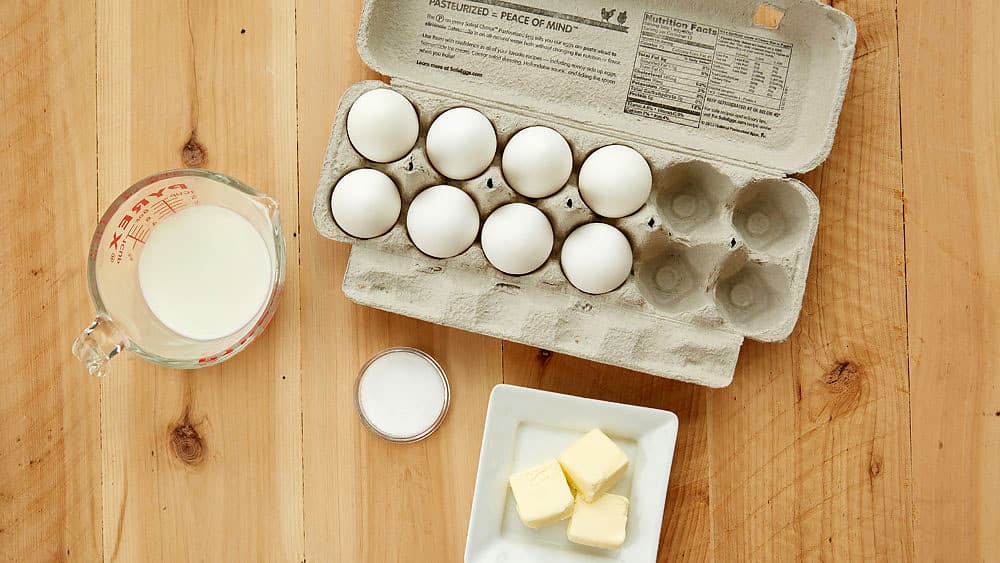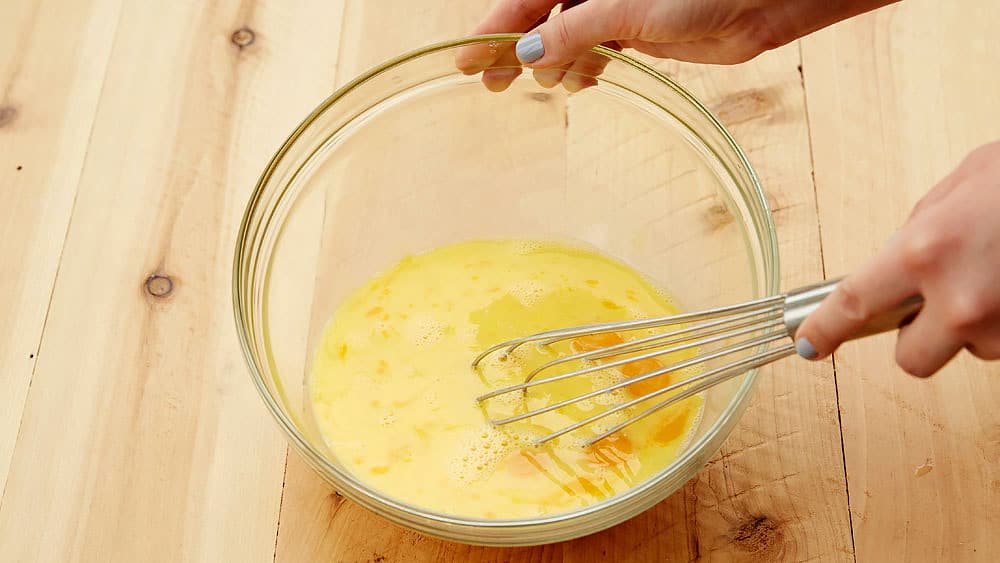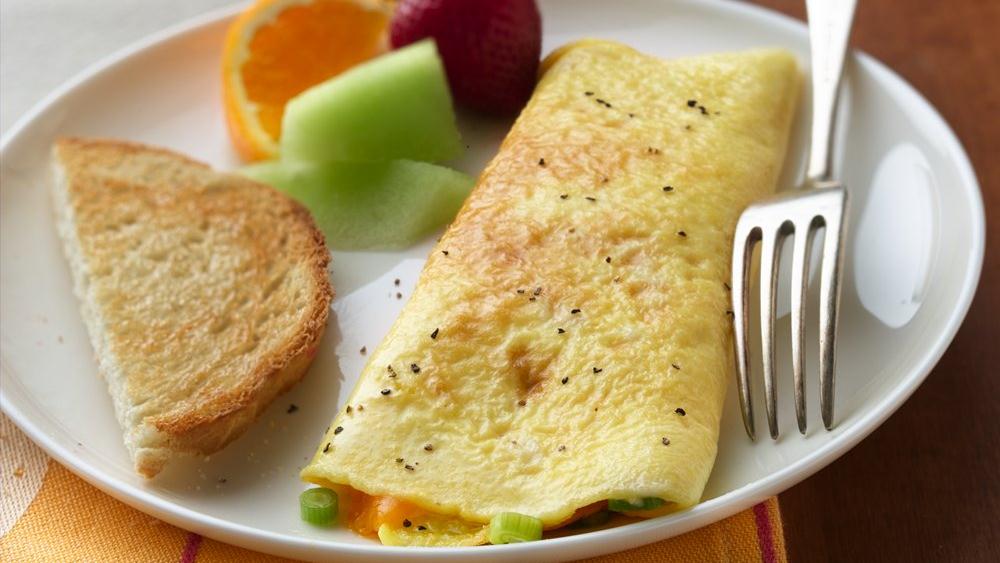(function() {
document.addEventListener('DOMContentLoaded', function() {
var componentMetadata = JSON.parse('\x7b\x22componentName\x22\x3a\x22Breadcrumb_258d5974-e976-4bc2-8d36-ccdbbaac0193\x22,\x22deferOptions\x22\x3a\x7b\x22deferComponent\x22\x3afalse,\x22deferType\x22\x3a\x22None\x22,\x22deferId\x22\x3a\x22rde8e8364140b4a6a9389bacd28616c09\x22,\x22deferredContainerId\x22\x3a\x22\x2fcommonBreadcrumb\x22,\x22deferredContainerView\x22\x3anull\x7d,\x22viewName\x22\x3a\x22Breadcrumb\x22\x7d');
var configuration = {"links":[{"url":"/","label":"Home"},{"url":"/everyday-eats/breakfast-brunch/how-to-make-scrambled-eggs","label":"How to Make Scrambled Eggs"}]};
var moduleName = 'breadcrumb';
var isVueModule = true;
GeneralMills.PandoSites.RegisterControlInstance(moduleName, configuration, componentMetadata, isVueModule)
});
})();
(function() {
document.addEventListener('DOMContentLoaded', function() {
var componentMetadata = JSON.parse('\x7b\x22componentName\x22\x3a\x22ActionToolbar_bcfe5168-4c6e-4b8a-8181-233a0a250020\x22,\x22deferOptions\x22\x3a\x7b\x22deferComponent\x22\x3atrue,\x22deferType\x22\x3a\x22OnDemand\x22,\x22deferId\x22\x3a\x22r37edaa2a35a74ee887f58050599b857c\x22,\x22deferredContainerId\x22\x3a\x22\x2ffloatingActionToolbar\x2ffloatingActionToolbar_interop\x22,\x22deferredContainerView\x22\x3a\x22InteropDeferWrapper\x22\x7d,\x22viewName\x22\x3a\x22ActionToolbar\x22\x7d');
var configuration = {"contentId":"258d5974-e976-4bc2-8d36-ccdbbaac0193","toolbarSettings":{"id":"bcfe5168-4c6e-4b8a-8181-233a0a250020","regAction":"FAVORITE","eSourceCode":14171,"namePassedToEvents":"ArticleStandardLongFormToolbar","buttons":[{"providerName":"pinterest","providerNamePassedToEvents":"Pinterest","shareUrlFormat":"//pinterest.com/pin/create/link/?url={0}","id":"63cf42f0-8fed-4b1c-acbe-0fe44811231d","allowedForAnonymousUsers":true,"type":"Social","displayName":"Pinterest","toggleDisplayName":"","namePassedToEvents":"Pinterest","cssClassName":"atButtonPinterest","privacyOptOutMessage":"\u003cdiv class=\u0027privacyMessage\u0027\u003e\n\u003ch3\u003eThis feature is not available with your current cookie settings.\u003c/h3\u003e\n\u003cp\u003eYou can \u003ca href=\u0027#\u0027 data-show-preference-center=\u00271\u0027\u003eupdate your privacy settings\u003c/a\u003e to enable this content. Please enable “Functional Cookies” to use this feature.\u003c/p\u003e\n\u003c/div\u003e","showPrivacyOptOutMessage":false},{"addFavoriteErrorMessage":"Sorry, something went wrong. Please save again.","removeFavoriteErrorMessage":"Error occurred while removing from favorites","regAction":"FAVORITE","eSourceCode":14171,"isCurrentUserAnonymous":false,"isFavoriteItem":false,"id":"351369d5-f1b1-4a90-b495-16074575bb8a","allowedForAnonymousUsers":false,"type":"Favorite","displayName":"Save","toggleDisplayName":"Saved","namePassedToEvents":"Favorite","cssClassName":"atButtonFavorite","privacyOptOutMessage":"\u003cdiv class=\u0027privacyMessage\u0027\u003e\n\u003ch3\u003eThis feature is not available with your current cookie settings.\u003c/h3\u003e\n\u003cp\u003eYou can \u003ca href=\u0027#\u0027 data-show-preference-center=\u00271\u0027\u003eupdate your privacy settings\u003c/a\u003e to enable this content. Please enable “Functional Cookies” to use this feature.\u003c/p\u003e\n\u003c/div\u003e","showPrivacyOptOutMessage":false},{"providerName":"facebook","providerNamePassedToEvents":"Facebook","shareUrlFormat":"//facebook.com/sharer/sharer.php?u={0}","id":"6d176960-1afd-4a34-83b5-795429359551","allowedForAnonymousUsers":true,"type":"Social","displayName":"Facebook","toggleDisplayName":"","namePassedToEvents":"Facebook","cssClassName":"atButtonFacebook","privacyOptOutMessage":"\u003cdiv class=\u0027privacyMessage\u0027\u003e\n\u003ch3\u003eThis feature is not available with your current cookie settings.\u003c/h3\u003e\n\u003cp\u003eYou can \u003ca href=\u0027#\u0027 data-show-preference-center=\u00271\u0027\u003eupdate your privacy settings\u003c/a\u003e to enable this content. Please enable “Functional Cookies” to use this feature.\u003c/p\u003e\n\u003c/div\u003e","showPrivacyOptOutMessage":false},{"templateId":"eb460499-2547-4f84-a197-60f31934a3b9","dialogHeading":"Email Article","emailCode":"PB_ContentEmail","dialogSettings":{"cancelButtonText":"Cancel","copyToSenderLabel":"Send a copy to myself","emailAddressesLabel":"* Email Address","emailInstructionText":"Separate email addresses with commas","fromText":"From:","privacyPolicyText":"\u003cp\u003e\u0026copy;2025 General Mills, Inc. All Rights Reserved. This information will only be used to send an email to your friend(s) and will not be saved. Please read our \u003ca rel=\u0022noopener noreferrer\u0022 rel=\u0022noopener noreferrer\u0022 href=\u0022http://www.generalmills.com/company/privacy-policies/privacy-policy-us\u0022 target=\u0022_blank\u0022 shape=\u0022rect\u0022\u003ePrivacy Policy\u003c/a\u003e.\u003c/p\u003e","requiredFieldText":"* Required","sendButtonText":"Send","senderEmailAddressLabel":"* Your Email Address","senderFirstNameLabel":"* Your First Name","sendToText":"Send To:"},"id":"2a5b12c8-299b-467d-812e-41e9a0afb70d","allowedForAnonymousUsers":true,"type":"Email","displayName":"Email","toggleDisplayName":"","namePassedToEvents":"Email","cssClassName":"atButtonEmail","privacyOptOutMessage":"\u003cdiv class=\u0027privacyMessage\u0027\u003e\n\u003ch3\u003eThis feature is not available with your current cookie settings.\u003c/h3\u003e\n\u003cp\u003eYou can \u003ca href=\u0027#\u0027 data-show-preference-center=\u00271\u0027\u003eupdate your privacy settings\u003c/a\u003e to enable this content. Please enable “Functional Cookies” to use this feature.\u003c/p\u003e\n\u003c/div\u003e","showPrivacyOptOutMessage":false},{"layoutParameter":"p%3d1","id":"783fefb5-010a-4be1-b84d-f0447da7c52c","allowedForAnonymousUsers":true,"type":"Print","displayName":"Print","toggleDisplayName":"","namePassedToEvents":"Print","cssClassName":"atButtonPrint","privacyOptOutMessage":"\u003cdiv class=\u0027privacyMessage\u0027\u003e\n\u003ch3\u003eThis feature is not available with your current cookie settings.\u003c/h3\u003e\n\u003cp\u003eYou can \u003ca href=\u0027#\u0027 data-show-preference-center=\u00271\u0027\u003eupdate your privacy settings\u003c/a\u003e to enable this content. Please enable “Functional Cookies” to use this feature.\u003c/p\u003e\n\u003c/div\u003e","showPrivacyOptOutMessage":false}],"isSticky":true},"userSettings":{"isCurrentUserAnonymous":true,"isFavoriteItem":false,"isAnonymousUserWithFavorites":false},"pageAttributes":{"url":"https%3a%2f%2fwww.pillsbury.com%2feveryday-eats%2fbreakfast-brunch%2fhow-to-make-scrambled-eggs","contentId":"258d5974-e976-4bc2-8d36-ccdbbaac0193"},"recaptchaPublicKey":"6LceAigUAAAAAC8aIQvJ9yRpRl3r1ZBKbou-tIDe"};
var moduleName = 'actionToolbar';
var isVueModule = true;
GeneralMills.PandoSites.RegisterControlInstance(moduleName, configuration, componentMetadata, isVueModule)
});
})();
You’d be hard pressed to find a protein more versatile than eggs. Essential in many desserts and sweet or savory breakfasts, eggs can even serve as a binder for crunchy coatings on meat at the dinner table. Plus: Brinner! (Breakfast for dinner, anyone?) Eggs have become one of our quick dinner secret weapons.
Today, we’re diving deep on eggs in one of their most basic preparations: how to cook scrambled eggs.
The Science of Scrambled Eggs
They say the best place to start is the beginning, so let’s get scientific. Eggs, which can appear fairly simple, are actually pretty complicated. They start as a liquid, but when heated up, their proteins bind together to create a more solid structure. When you whisk the eggs prior to adding them to a hot pan, you mix up or scramble (hey-o!) the proteins so they get all tangled together. This helps create the fluffy texture and cohesive appearance of scrambled eggs.
If you crack the eggs into a pan and try to scramble them there (I’ve seen it before), you can’t get the cohesion that you do from whisking in a bowl off the heat because the eggs start to cook the moment they hit the pan.
To get the very best scrambled eggs, you need to keep the pan on low heat and cook them slowly. Sure, anyone can make quick, overdone scrambled eggs, but you’re about to become an expert!
It’s important to keep an eye on your scrambled eggs because if you get distracted you can quickly end up with dried out or even burned eggs. Some prefer them more overdone, probably because that’s how they’ve always been made at their house, but chefs everywhere will tell you that perfect, fluffy scrambled eggs may actually appear to be just a tad underdone. They have soft, pillowy curds, which develop over low heat with occasional stirring. The main point: Perfect scrambled eggs are still moist.
What You Need to Make Scrambled Eggs
The only essential ingredients for scrambled eggs is eggs and either butter or oil to cook them in. However, to make them extra delicious, you’ll want some salt and pepper for seasoning and a few tablespoons of your choice added liquid, be it milk or water, to get that extra fluffy texture we talked about.
When it comes to seasoning scrambled eggs there are two schools of thought: 1) Season the eggs in the bowl at the very beginning or 2) Season just before completely set in the pan. Both ways work, so do whatever you think is best.

Though optional, garnishing scrambled eggs with chopped fresh dill or chives is a tasty addition. Just fold them in toward the end of the cooking time so they wilt slightly. Dried dill also works well, if it’s what you have on hand, and can be added at any time during the cooking process.
The best tools for making scrambled eggs are a whisk or fork, a bowl and a sauté pan and rubber spatula. A whisk does an excellent job of incorporating air into the eggs, but a fork can do this almost as well. A hand mixer or blender can also do the trick, but why dirty additional dishes? Just use some muscle to whisk vigorously until the eggs are completely incorporated into a cohesive mixture and color.

Adding some liquid to the bowl when whisking your eggs can contribute to fluffy scrambled eggs. When making just one serving, a tablespoon or two of cream is a great option for extra-rich eggs, but milk, water or dairy-free milk alternatives such as rice milk work just as well.
When cooking, a rubber spatula is the best tool for scrambled eggs because it’s flexible and can catch all the tasty curds created in the pan. A wooden or bamboo spatula also does a decent job.
How to Make Scrambled Eggs
For our recipe you will need:
- 8 eggs
- ½ cup milk
- ¼ teaspoon salt
- 1 tablespoon butter
Instructions
Step 1: In medium bowl, combine eggs, milk and salt. Beat slightly with fork or wire whisk until well blended.
Step 2: Melt butter in medium skillet over medium heat; tilt pan to coat.
Step 3: Add egg mixture. Reduce heat to low.
Step 4: Cook until firm but still moist, stirring frequently. I often turn the pan off early because I know that eggs, just like any other protein, will continue to cook even off the heat. (This is also known as carryover cooking. Don’t let it happen to you!) To avoid rubbery, overdone eggs, cook them until they’re still moist.
Optional: At the end of the cook time, feel free to fold in some chopped fresh chives or dill, but these scrambled eggs are tasty all on their own, too.
Frequently Asked Questions
What should I serve with scrambled eggs?
Our scrambled eggs look mighty fine alongside some fruit and crispy, oven-cooked bacon. They’re also right at home alongside classic waffles or pancakes, but my personal favorite breakfast carb is toast. I like to spread one slice with something sweet like jam or peanut butter, and use the other as a vessel for those perfectly scrambled eggs.
How else can I cook scrambled eggs?
Though cooking in a sauté pan on the stovetop is the traditional method for making scrambled eggs, they can also be made in a slow cooker or in the microwave. Someone even found a way to make magic, 15-second creamy scrambled eggs just by adding some starch.
What’s the best way to store + heat leftover scrambled eggs?
Got leftovers? Store in an airtight container in the refrigerator for up to four days. When reheating scrambled eggs, you can put them on a plate in the microwave, covered with a paper towel or heat them slowly on the stovetop till heated through. Just know that refrigerating scrambled eggs will change their texture.
What types of eggs can you scramble?
Chicken eggs truly are best for those who prefer scrambled eggs. Duck eggs are denser than chicken eggs, which can lead to a temperamental scramble. Quail eggs make for a rich and creamy scramble, but expect to use 5-10 quail eggs for each chicken egg you would normally use.
Does age matter for scrambled eggs?
The freshest scrambled eggs are the tastiest scrambled eggs. If possible, head to a grocery store that carries eggs from a local farmer, or visit a farmers’ market. It’s a great excuse to also buy some delicious things to add in to your scramble! Fresh herbs or vegetables, meat and cheese are all delicious additions to the best scrambled eggs.
What’s the difference between scrambled eggs and an omelet?
Scrambled eggs and omelets do begin very much the same, with a mixture of whisked eggs and a skillet or frying pan. However, an omelet is cooked on slightly higher heat, without any stirring of the egg mixture once it hits the pan. This allows the egg to set in one large, evenly cooked piece that you either roll or fold around your favorite fillings. While omelets are typically filled with anything you might find in a scramble, mastering perfect scrambled eggs is definitely a prerequisite to making an omelet.

What are the benefits of scrambled eggs?
Aside from packing protein to make them filling, scrambled eggs boast a healthy dose of vitamin b12, which makes it a great option for vegetarians. B12 is almost entirely found in animal sources, so eggs are a good option for adding more of this important vitamin to your diet.
Plus, scrambled eggs are cheap and easy to make. Our recipe calls for just four ingredients, and then you can let your imagination run wild with add-ins like chopped sautéed vegetables, cooked meat like sausage, ham or bacon and your favorite cheese. Scrambled eggs are essentially a blank canvas.
What to Make with Scrambled Eggs
Now you just need some bacon to go with those eggs!
(function() {
document.addEventListener('DOMContentLoaded', function() {
var componentMetadata = JSON.parse('\x7b\x22componentName\x22\x3a\x22NewsletterCTA_592b7e30-5c94-49d6-8316-3c4546d1dac2\x22,\x22deferOptions\x22\x3a\x7b\x22deferComponent\x22\x3atrue,\x22deferType\x22\x3a\x22OnDemand\x22,\x22deferId\x22\x3a\x22r8ea01ba00974429ba731064c8d3b150c\x22,\x22deferredContainerId\x22\x3a\x22\x2fprimaryColumn\x2finteropInlineNewsletterCta\x22,\x22deferredContainerView\x22\x3a\x22InteropDeferWrapper\x22\x7d,\x22viewName\x22\x3a\x22NewsletterCTA\x22\x7d');
var configuration = {"unsubscribedNewsletters":[{"listId":"6d3e858f-4804-4f38-9b8a-712a9a5668cc","thumbnailImageUrl":"/-/media/GMI/Core-Sites/PB/Images/Shared/myaccount/newsletters/PB_Email_Thumb_200x200.gif?sc_lang=en","previewUrl":"https://morpheus3.idpk.net/email_sends/10626/preview","name":"Pillsbury\u0027s Email","isPromo":false}],"settings":{"anonymousCopy":"Family-friendly meals made easy!","anonymousDescriptionCopy":"Make everyday family moments count, with easy recipes that everyone will love. Join our email community to receive tested recipes and tips.","anonymousThankYouCopy":"Thanks! Your first email is on its way.","anonymousThankYouDescriptionCopy":"\u003cp\u003e\u003cspan\u003eNow that you\u0026rsquo;re signed up, create an account on Pillsbury.com to save your favorite recipes, learn more about special promotions and get meal inspiration for any occasion.\u003c/span\u003e\u003c/p\u003e","anonymousButtonText":"Help me make mealtimes easier!","anonymousEmailInvalidErrorText":"Please enter a valid email address.","anonymousSubscribeErrorText":"We encountered an error while signing you up. Please try again.","anonymousEmailAddressPlaceholderText":"Enter your email address","anonymousEmailAddressLabel":"Email Address","anonymousLegalCopy":"By signing up, you accept our\u0026nbsp;\u003cspan style=\u0022text-decoration: underline;\u0022\u003e\u003ca rel=\u0022noopener noreferrer\u0022 href=\u0022https://www.generalmills.com/privacy-security/us-english-privacy-policy\u0022 target=\u0022_blank\u0022\u003ePrivacy Policy\u003c/a\u003e\u003c/span\u003e\u0026nbsp;and agree that your information may be used across our\u0026nbsp;\u003cspan style=\u0022text-decoration: underline;\u0022\u003e\u003ca rel=\u0022noopener noreferrer\u0022 href=\u0022https://www.generalmills.com/food-we-make/brands\u0022 target=\u0022_blank\u0022\u003efamily of brands\u003c/a\u003e.\u003c/span\u003e","requiredFieldText":"","backgroundColor":"#002E6D","accentColor":"","registrationUrl":"/user-profile/register?RegAction=SUBSCRIBERUPGRADE\u0026esrc=14171\u0026returnUrl=%2feveryday-eats%2fbreakfast-brunch%2fhow-to-make-scrambled-eggs","registrationLinkText":"Sign up now","enableExpandedFields":false,"hideForSessionCookieExpiration":0,"ctaType":"StandardAnonymous","location":"Inline","userState":"Anonymous","sourceCodeOverride":0}};
var moduleName = 'newsletterCta';
var isVueModule = true;
GeneralMills.PandoSites.RegisterControlInstance(moduleName, configuration, componentMetadata, isVueModule)
});
})();